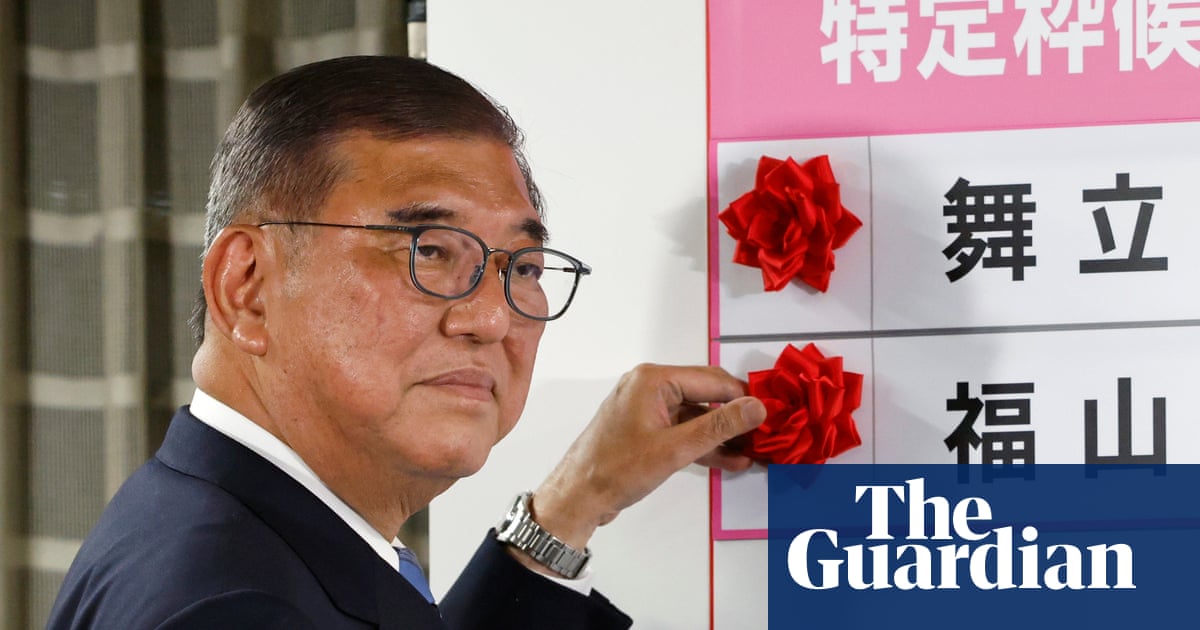Ballot heaps pressure on Shigeru Ishiba’s minority government after it lost control of lower house in October
Japan’s shaky ruling coalition is likely to lose control of the upper house, exit polls showed after Sunday’s election, potentially heralding political turmoil as a tariff deadline with the US looms.
While the ballot does not directly determine whether prime minister Shigeru Ishiba’s minority government falls, it heaps pressure on the embattled leader, who also lost control of the more powerful lower house in October.
Ishiba’s Liberal Democratic party (LDP) and coalition partner Komeito need 50 seats to secure the 248-seat upper chamber in an election where half the seats are up for grabs.
They are forecast to hold 32 to 51 seats, the exit poll by public broadcaster NHK showed. Other broadcasters forecast the ruling coalition would return 41 to 43 seats. If the coalition drops below 46 seats it would mark its worst result since it was formed in 1999.
That comes on top of its worst showing in 15 years in October’s lower house election, a vote that has left Ishiba’s administration vulnerable to no-confidence motions and calls from within his own party for leadership change.
Speaking to NHK two hours after polls closed, Ishiba, 68, said he “solemnly” accepted the “harsh result”.
Asked whether he intended to stay on as prime minister and party leader, he said: “That’s right.”
He later told TV Tokyo: “We are engaged in extremely critical tariff negotiations with the United States … we must never ruin these negotiations. It is only natural to devote our complete dedication and energy to realising our national interests.”
Japan, the world’s fourth largest economy, faces a deadline of 1 August to strike a trade deal with the US or face punishing tariffs in its largest export market.
The main opposition Constitutional Democratic party is projected to win 18 to 30 seats, from 22 held previously, NHK’s exit poll showed.
The far-right Sanseito party, birthed on YouTube a few years ago, has been the surprise package with its “Japanese first” campaign and warnings about a “silent invasion” of foreigners. It is forecast to win 10 to 15 seats in the chamber, up from one held previously, yet it holds only three seats in the lower house.
Opposition parties advocating for tax cuts and welfare spending have struck a chord with voters, the exit polls showed, as rising consumer prices – particularly a jump in the cost of rice – have sowed frustration at the government’s response.
“The LDP was largely playing defence in this election, being on the wrong side of a key voter issue,” said David Boling, a director at the consulting firm Eurasia Group.
“Polls show that most households want a cut to the consumption tax to address inflation, something that the LDP opposes. Opposition parties seized on it and hammered that message home.”
The LDP has been urging for fiscal restraint, with one eye on a very jittery government bond market, as investors worry about Japan’s ability to refinance the world’s largest debt pile.
Sanseito, which first emerged during the Covid pandemic spreading conspiracy theories about vaccinations and a cabal of global elites, has dragged once fringe political rhetoric into the mainstream and gained wider support among frustrated voters.
It remains to be seen whether the party can follow the path of other far-right parties with which it has drawn comparisons, such as Germany’s AfD and Reform UK.
“I am attending graduate school but there are no Japanese around me. All of them are foreigners,” said Yu Nagai, a 25-year-old student who voted for Sanseito earlier on Sunday.
“When I look at the way compensation and money are spent on foreigners, I think that Japanese people are a bit disrespected,” he said after casting his ballot at a polling station in Tokyo’s Shinjuku ward.
In Japan, which has the world’s oldest population, foreign-born residents hit a record of about 3.8 million last year.
That is still just 3% of the total population, a much smaller fraction than in the US and Europe, but comes amid a tourism boom that has made foreigners far more visible across the country.
Source: www.theguardian.com
